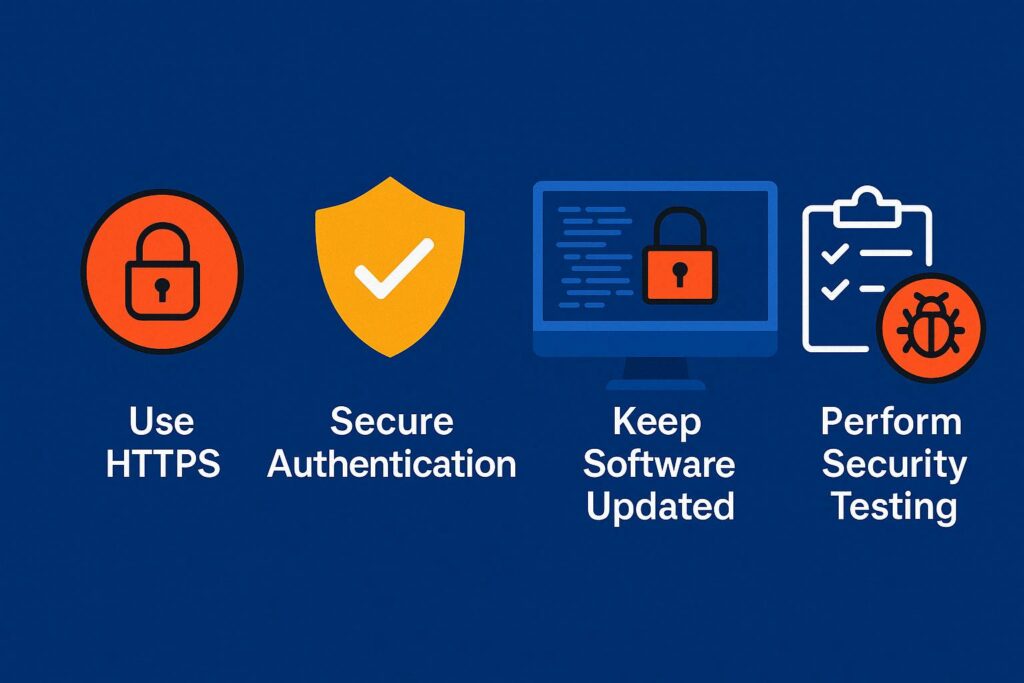
Web Development Security Best Practices Every Developer Should Know
Building a functional website is only half the battle—ensuring it’s secure is where the real challenge begins. Whether you’re launching an e-commerce platform or a simple blog, overlooking security during development can open the door to serious risks. Here are essential web development security best practices that every developer should integrate from day one.

1. Sanitize and Validate All Inputs
Unfiltered user input is one of the top causes of web vulnerabilities. Always validate and sanitize inputs to prevent SQL injection, XSS, and other common attacks. Don’t rely solely on client-side checks—server-side validation is crucial.
2. Use HTTPS and Secure Headers
Encrypt all data in transit using HTTPS, and implement secure HTTP headers like Content-Security-Policy, X-Content-Type-Options, and X-Frame-Options. These small adjustments can drastically reduce the attack surface.
3. Manage Sessions Securely
Use secure, HTTP-only, and same-site cookies to protect sessions. Ensure session timeouts and implement token-based authentication (such as JWT) when appropriate.
4. Protect Against CSRF and XSS
Use anti-CSRF tokens and frameworks that escape output by default. Avoid inline scripts and always encode user-generated content.
5. Keep Dependencies Updated
Third-party libraries and plugins are often targets of attackers. Monitor dependencies for known vulnerabilities and update them regularly. Use tools like npm audit, Snyk, or OWASP Dependency-Check.
6. Implement Role-Based Access Control (RBAC)
Not all users should have the same access. Set granular permissions and ensure your authorization checks can’t be bypassed.
7. Use Secure Password Storage
Never store passwords in plain text. Hash them using bcrypt, scrypt, or Argon2, and implement rate-limiting to prevent brute-force attacks.
8. Monitor and Log Everything
Use logging to monitor suspicious activity, but never log sensitive data such as passwords or full credit card numbers.
9. Disable Unused Features in Production
Turn off debugging tools, admin panels, and unnecessary endpoints before deployment. These can give attackers a backdoor into your app.
10. Perform Regular Security Scans
Even the best development practices need verification. Perform regular vulnerability scans to identify new risks as your app evolves.
At WebSecAudit, we help developers and business owners secure their WordPress and custom websites with in-depth vulnerability scans and actionable recommendations. If you’re unsure whether your site is protected, we invite you to try our scanning service and strengthen your site before attackers find the cracks.
If you want to explore other articles similar to Web Development Security Best Practices Every Developer Should Know you can visit the Web Vulnerabilities.






Leave a Reply